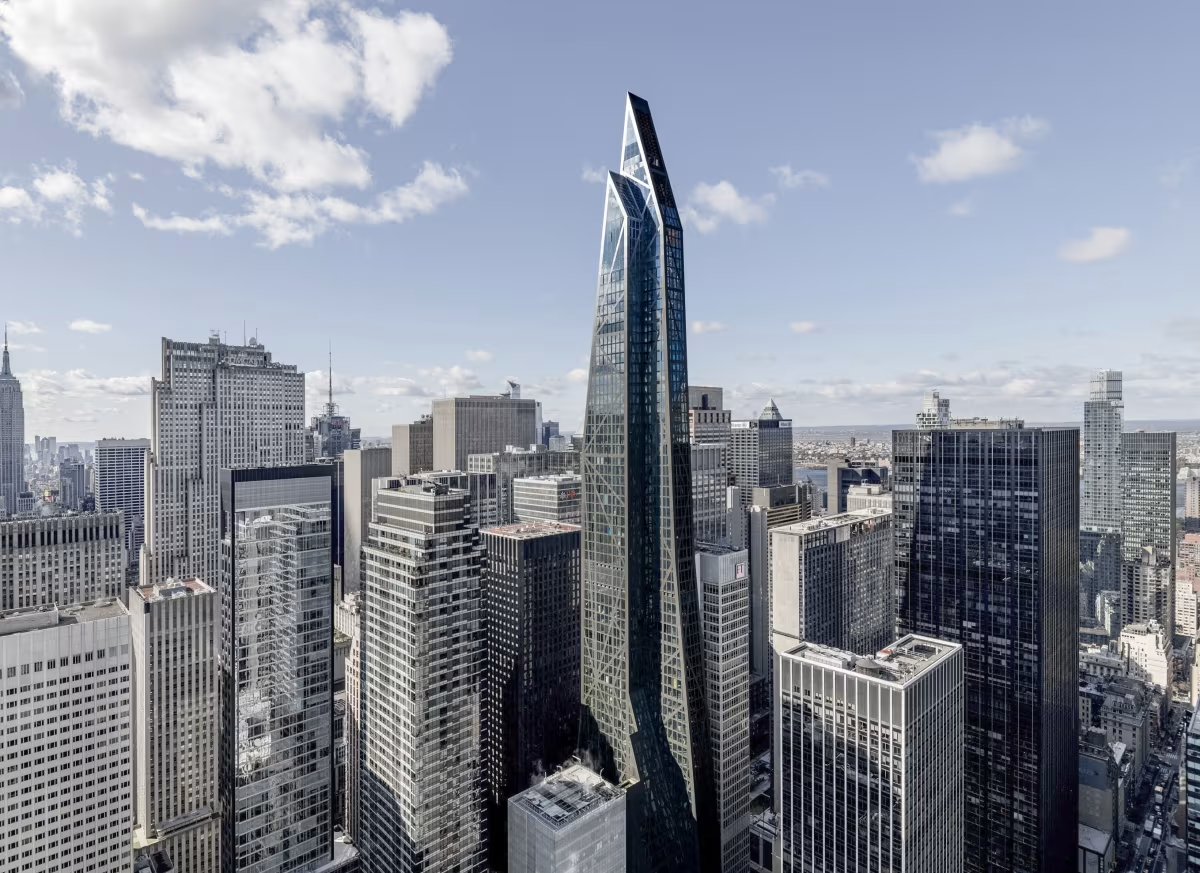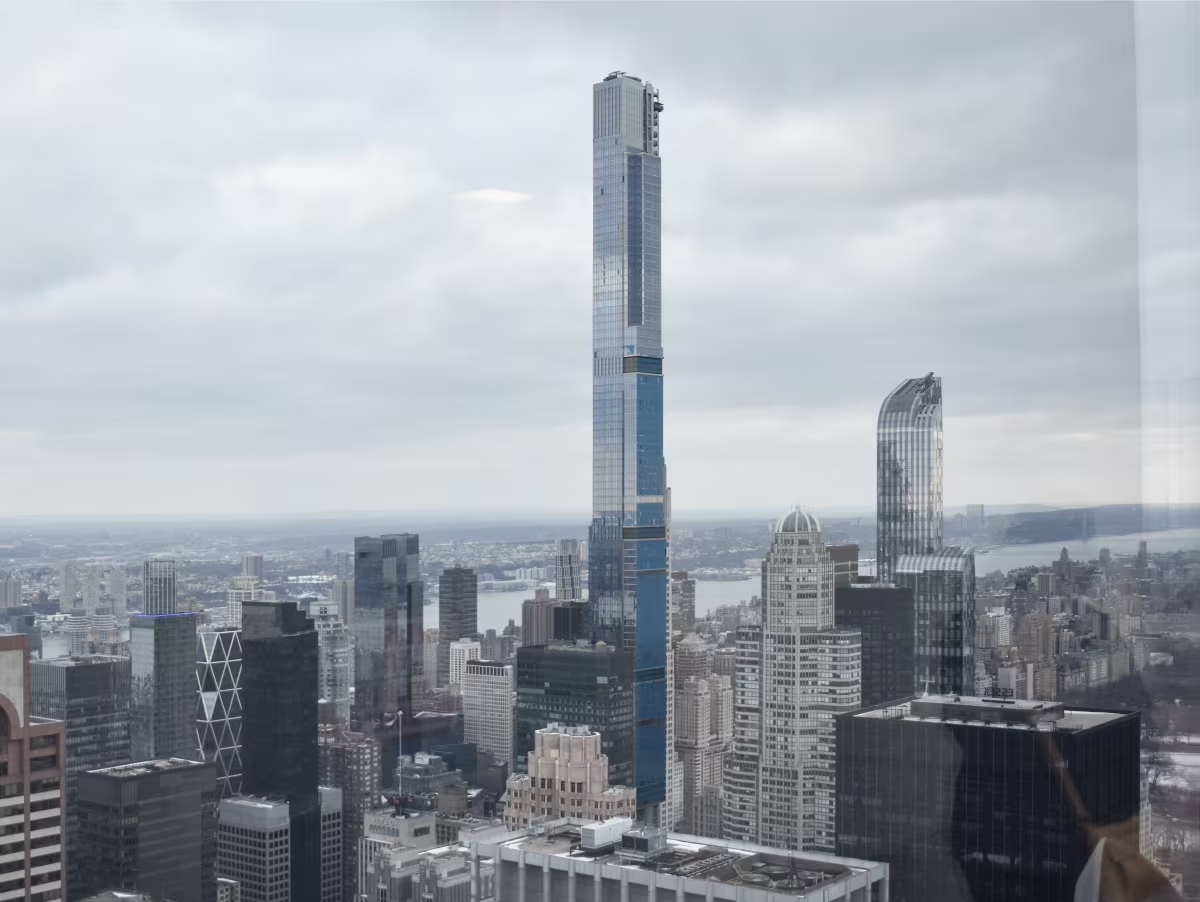53W53 Building vs Central Park Tower


Comparing the 53W53 Building and the Central Park Tower is interesting because they both stand in New York, NY, and were completed just one year apart, but they were designed by different architects.
This offers a unique glimpse at how rival designers approached projects in the same city during the same era.
Height & Size
The Central Park Tower is clearly the larger tower of the two, both in terms of height and number of floors. It rises to 1549ft (472m) with 98 floors above ground, while the 53W53 Building reaches 1050ft (320m) with 77 floors above ground.
Central Park Tower also offers more total built-up area, a total fo 1,285,307 sqf (119,409m2), which is about 626,997 sqf (58,250m2) more than what the 53W53 Building offers.
Of course, each project may have faced different briefs or regulatory constraints, which we don't really know about and could also explain the outcome.
Architectural Style
Both the 53W53 Building and the Central Park Tower were designed in line with the aesthetic conventions of the Contemporary style.
At the time, this style was at the height of its popularity. So both Jean Nouvel and Adrian Smith + Gordon Gill Architecture followed what was in many ways expected of them, producing designs that fit comfortably within contemporary architectural norms, rather than breaking with convention.
Uses
The 53W53 Building follows a mixed-use model, combining residential, hotel and cultural. In contrast, the Central Park Tower has remained primarily residential.
In terms of capacity, the 53W53 Building offers 145 apartments, while the Central Park Tower provides 179 units.
Structure & Facade
The two towers rely on different structural systems, reflecting distinct engineering strategies.
The 53W53 Building uses a Trussed Frame structural system, which uses diagonal bracing in addition to beams and columns for stability, while the Central Park Tower uses a Frame system, that relies on a regular grid of columns and beams to sustain its weight.
Yet, when it comes to their facade, they both employed the same solution, a Curtain Wall facade.
A curtain wall is a non-load-bearing facade hung from the structural frame. It is anchored to floor slabs and transfers only its own weight and wind loads, allowing for sleek, glassy exteriors.
| 53W53 Building | Central Park Tower | |
|---|---|---|
| Jean Nouvel | Architect | Adrian Smith + Gordon Gill Architecture |
| 2006 | Design Started | 2010 |
| 2009 | Design Ended | 2014 |
| 2015 | Construction Started | 2014 |
| 2019 | Year Completed | 2020 |
| Contemporary | Architectural Style | Contemporary |
| Mixed | Current Use | Residential |
| 77 | Floors Above Ground | 98 |
| 2 | Floors Below Ground | 4 |
| 271 | Last Floor Height | 432 |
| 320 m | Height (m) | 472 m |
| 61159 | Built-up Area (m²) | 119409 |
| 145 | Residential Units | 179 |
| Trussed Frame | Structure Type | Frame |
| Concrete | Vertical Structure Material | Reinforced Concrete |
| Reinforced Concrete | Horizontal Structure Material | Poured Concrete Over Metal Decking |
| Yes | Facade Structural? | No |
| Glass, Steel, Aluminum | Main Facade Material | Aluminum, Glass |
| Lendlease Corporation | Main Contractor | Lendlease |
| Hines | Developer | Extell Development Company |
| WSP Flack + Kurtz | MEP Engineer | AKF Group |
| WSP Cantor Seinuk | Structural Engineer | WSP |
| Israel Berger & Associates | Facade Consultant | James Carpenter Design Associates And Permasteelisa Group |
| Thierry Despont | Interior Designer | Rottet Studio |
| NY | State | NY |
| New York | City | New York |
| 53 West 53rd Street | Address | 225 West 57th Street |